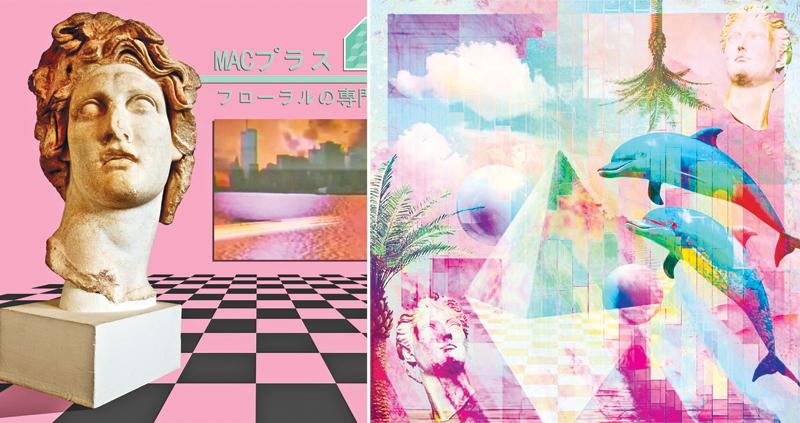
Great music has always been distinguished by certain characteristics, like craftmanship, inspiration and several other factors. But none are more important than timelessness. At least, it used to be considered so by music elitists. But now, in a time when the very notion of good and bad music is generally understood to be subjective, there are no longer any defining characteristics for greatness. It is only in a musical ecosystem like this can the truly out-there music thrive. One such genre, or rather microgenre, is Vaporwave, a truly unique case of a musical and visual dual art form that has also morphed into something of an internet meme, eschewing timelessness in favor of embracing nostalgia.
Vaporwave
 As is the case with many modern musical genres, it is difficult to truly define what Vaporwave truly is, being so nebulous and vague that it frequently overlaps with other genres and aesthetics, most commonly with Synthwave. Both are commonly characterised as being inspired by the 80’s and 90’s, leaning heavily on nostalgia and electronic music. Neon colors and grid lines and general nostalgic imagery are common staples of the Synthwave/Vaporwave aesthetic though with minor distinction like colour. This becomes even more complicated with further sub genres of the two, like Outrun and Future Funk.
As is the case with many modern musical genres, it is difficult to truly define what Vaporwave truly is, being so nebulous and vague that it frequently overlaps with other genres and aesthetics, most commonly with Synthwave. Both are commonly characterised as being inspired by the 80’s and 90’s, leaning heavily on nostalgia and electronic music. Neon colors and grid lines and general nostalgic imagery are common staples of the Synthwave/Vaporwave aesthetic though with minor distinction like colour. This becomes even more complicated with further sub genres of the two, like Outrun and Future Funk.
However, what sets Vaporwave apart from its contemporaries is in its meaning. Though most people who have encountered Vaporwave might be completely oblivious to it, there is an inherent semi satirical critique of consumerism and pop culture. Vaporwave samples and messes with the very sounds of Capitalism itself as well as the commercial jingles, elevator music and synth.
The visuals and aesthetics also play into this, with images and graphics reminiscent of the 80s and 90s culture, with light glitchy visuals and chromatic aberration to create a nostalgic but surreal feeling that could be interpreted as a straightforward celebration or a satire on the decadence of that time period. This ambiguous pseudo satire is how Vaporwave got its name, taken from Vaporware, a product or software that is announced to the public but is never manufactured nor is it officially cancelled.
Popularity
The surreal visuals and music made it quite popular as a meme in some circles, boosting its popularity but as its genuine audience grew, so did those who liked it ironically. While this brought more attention to it, Vaporwave producers resented the memes, not appreciating them being treated like a joke.
Overtime, the ironic audience only in it for the memes would mock and belittle those with a genuine interest in it, calling them pretentious and eventually dismissing the trend as a dead genre.
That Vaporwave survived through this hardship stronger than before is a testament to the passion of its community. From that experience, Vaporwave managed to evolve from a microgenre into something bigger and formed its own sub genres, Future Funk, Hardvapour, Mallsoft and even Simpsonwave, which overlaid existing Vaporwave tracks over old Simpsons episodes creating the ultimate meme nostalgia.
Ultimately, Vaporwave has jumped the right hurdles that helped it go from a passing trend to a genuine musical genre which most modern genres fail to do, going through as much development in a few short years as older genres took decades for.
Though its meanings might have shifted, and most of its audience sticks around out of a sense of irony, the genre has evolved to appropriate these aspects into its identity and has only increased its longevity all the more for it.
